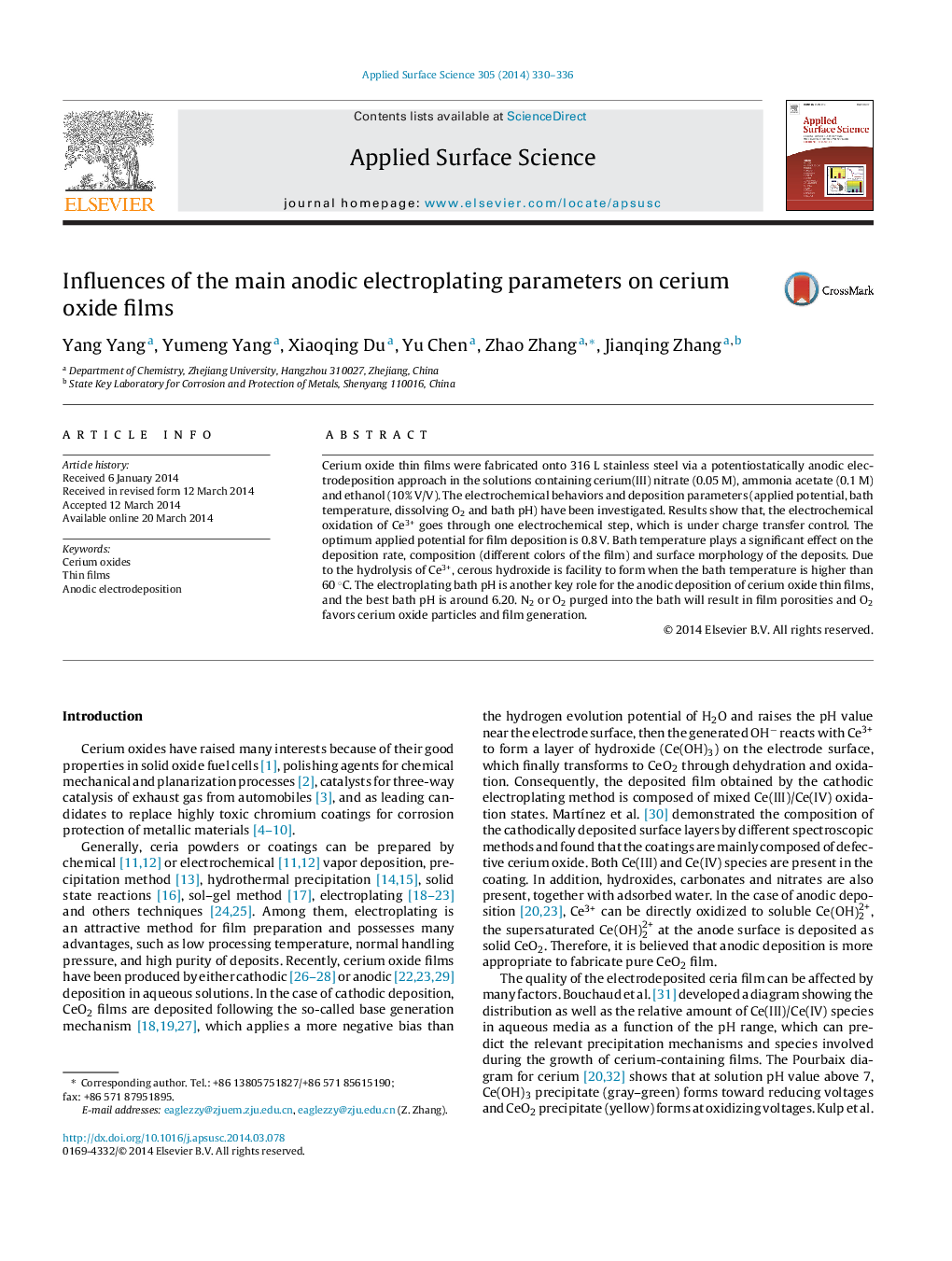| Article ID | Journal | Published Year | Pages | File Type |
|---|---|---|---|---|
| 5350306 | Applied Surface Science | 2014 | 7 Pages |
Abstract
Cerium oxide thin films were fabricated onto 316 L stainless steel via a potentiostatically anodic electrodeposition approach in the solutions containing cerium(III) nitrate (0.05 M), ammonia acetate (0.1 M) and ethanol (10% V/V). The electrochemical behaviors and deposition parameters (applied potential, bath temperature, dissolving O2 and bath pH) have been investigated. Results show that, the electrochemical oxidation of Ce3+ goes through one electrochemical step, which is under charge transfer control. The optimum applied potential for film deposition is 0.8 V. Bath temperature plays a significant effect on the deposition rate, composition (different colors of the film) and surface morphology of the deposits. Due to the hydrolysis of Ce3+, cerous hydroxide is facility to form when the bath temperature is higher than 60 °C. The electroplating bath pH is another key role for the anodic deposition of cerium oxide thin films, and the best bath pH is around 6.20. N2 or O2 purged into the bath will result in film porosities and O2 favors cerium oxide particles and film generation.
Related Topics
Physical Sciences and Engineering
Chemistry
Physical and Theoretical Chemistry
Authors
Yang Yang, Yumeng Yang, Xiaoqing Du, Yu Chen, Zhao Zhang, Jianqing Zhang,
